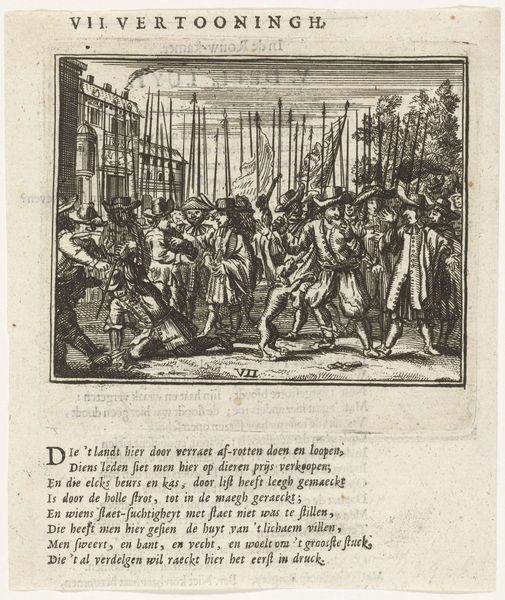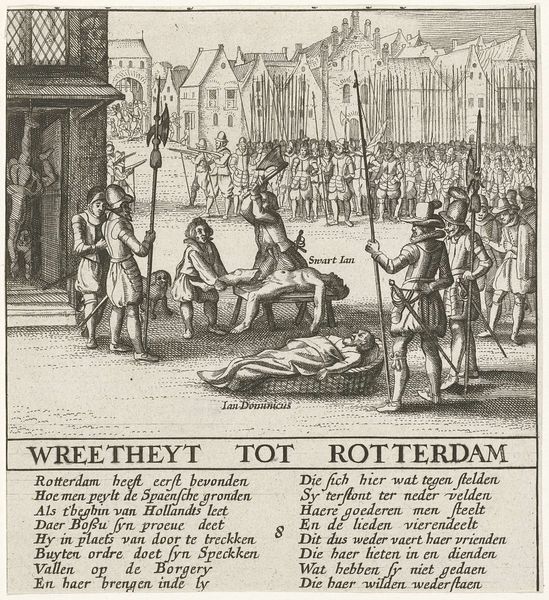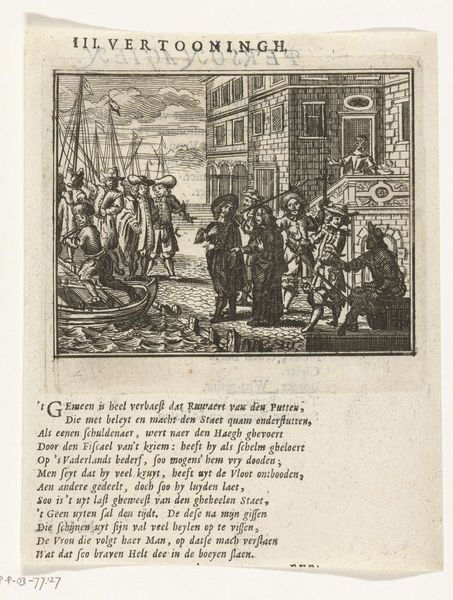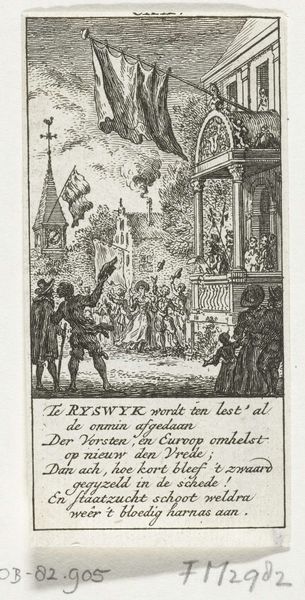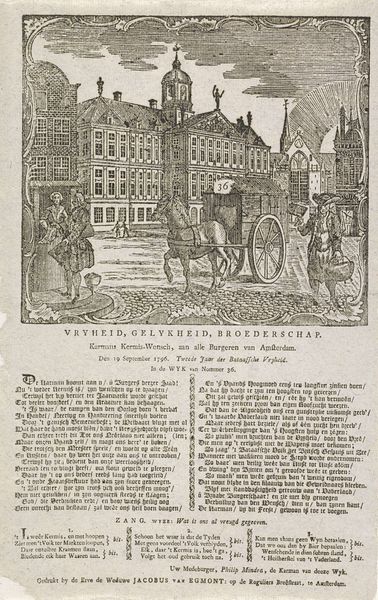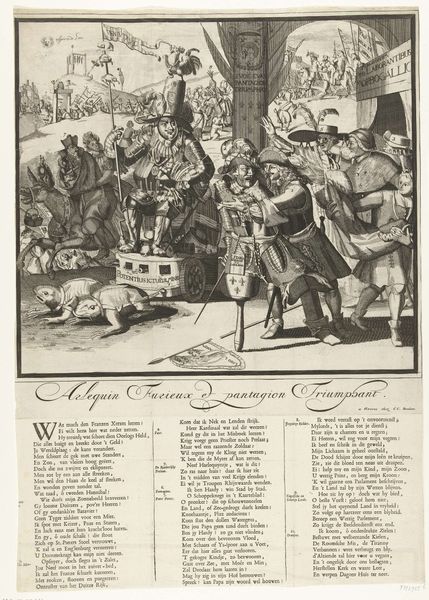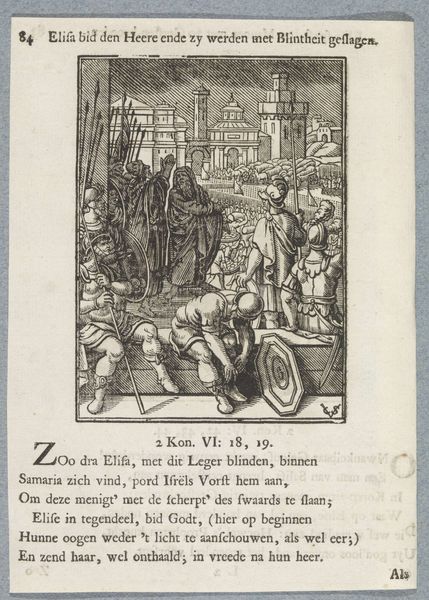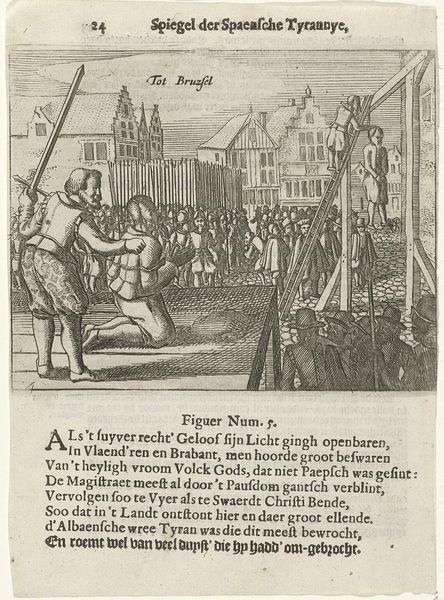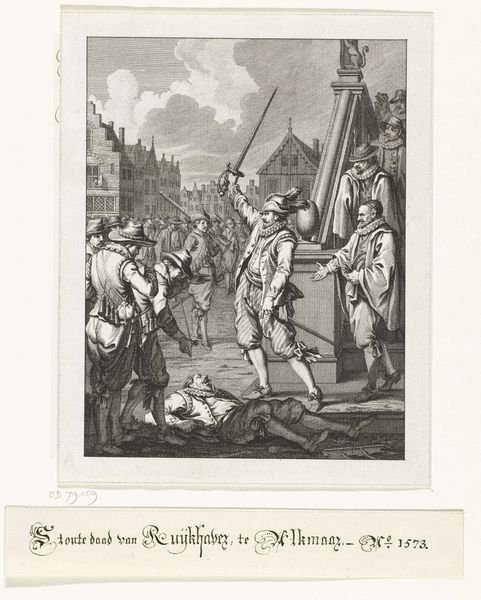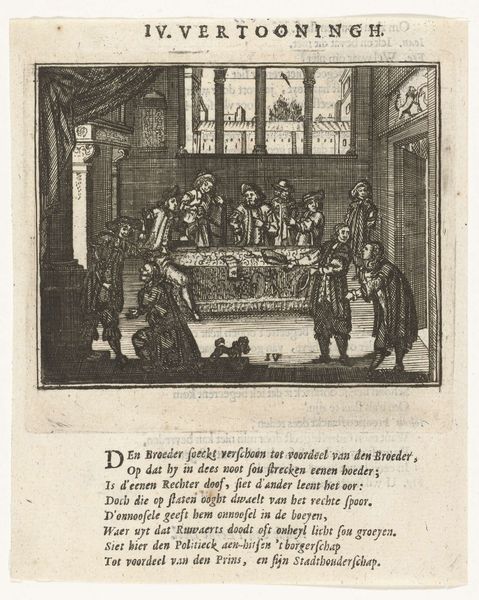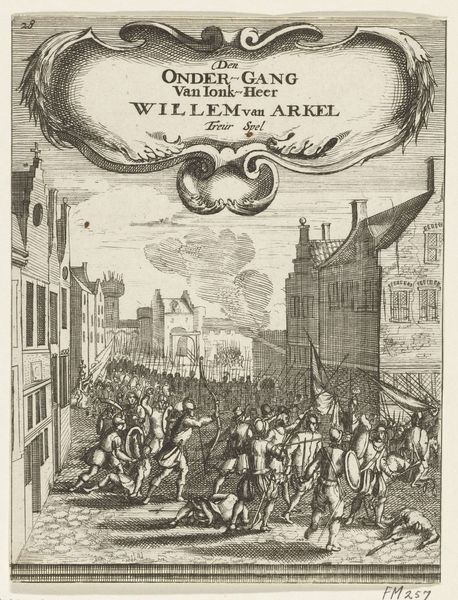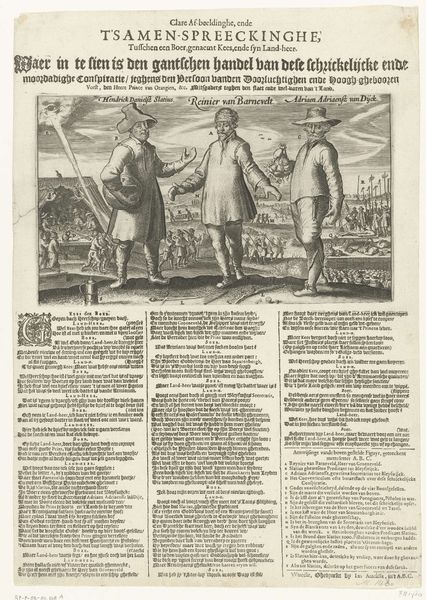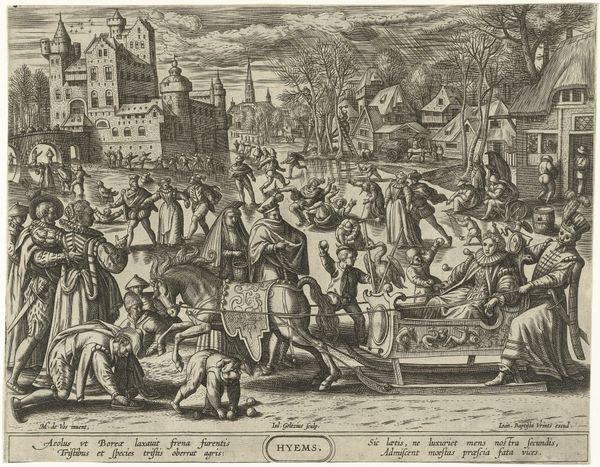
print, etching, engraving
#
narrative-art
#
baroque
# print
#
etching
#
old engraving style
#
genre-painting
#
history-painting
#
engraving
Dimensions: height 175 mm, width 135 mm
Copyright: Rijks Museum: Open Domain
Editor: So, here we have “Executions Ordered by Alva, ca. 1567,” a 17th-century print by an anonymous artist. It’s stark, wouldn't you say? Almost unsettling in its detailed depiction of what appears to be public executions. What do you see in this piece? Curator: This engraving is incredibly powerful. What strikes me most is how it functions as a piece of activist art. It wasn't simply documenting an event, but rather actively shaping the narrative around the Duke of Alva's actions in the Netherlands. Consider the context: this was created decades after the actual events, during a period of intense national identity formation in the Dutch Republic. Editor: I see what you mean. It's not just reporting, it’s taking a stance. The figures seem posed, almost like actors in a play. Curator: Precisely. Think about who this print was intended for. It circulated among a public eager to solidify its identity against Spanish rule. The artist is using the visual language of the Baroque—the dramatic lighting, the exaggerated gestures—to condemn Alva's regime as tyrannical and inhumane. How might contemporary audiences have reacted to such a visceral image of their oppressors? Editor: They probably felt validated, perhaps even emboldened in their resistance? This image connects individual suffering to a broader political cause. Curator: Exactly. And that's the enduring power of art like this. It becomes a rallying cry, a visual shorthand for the injustices faced by a community. By highlighting the brutality, it seeks to delegitimize power structures and incite change. It invites the viewer to become an active participant in the historical narrative. Editor: That gives me a whole new perspective. I had seen it as just a historical record, but now I see it as an active agent in shaping historical memory and influencing political sentiment. Curator: Precisely!
Comments
No comments
Be the first to comment and join the conversation on the ultimate creative platform.
